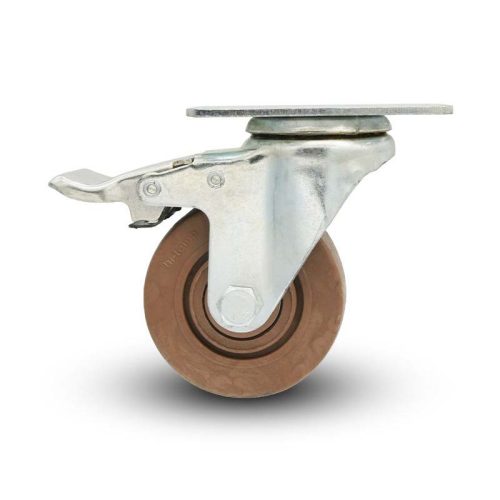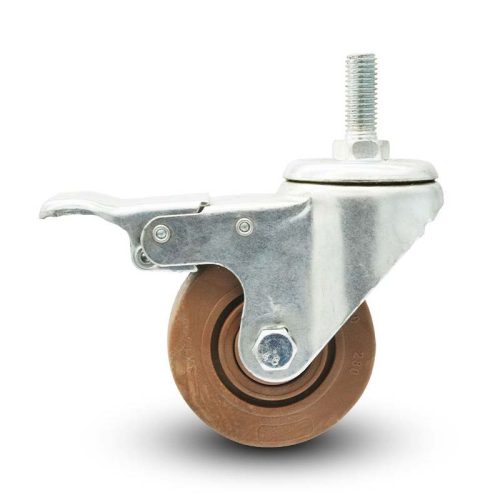Rigid casters play a critical role in various industries, facilitating the smooth movement of heavy equipment and materials. To ensure their optimal performance and longevity, proper maintenance is essential. In this article, we’ll explore practical steps to maintain and extend the lifespan of your rigid casters.
1. Regular Cleaning
Dirt, debris, and contaminants can accumulate on caster wheels over time, leading to premature wear and tear. Regularly clean your casters to remove these particles. Use a stiff brush or a pressure washer for efficient cleaning, and make sure the casters are thoroughly dry before using them again.
2. Lubrication
Proper lubrication is vital to reduce friction and extend the life of your casters. Lubricate the swivel mechanism and wheel bearings as per the manufacturer’s recommendations. Over-lubrication can be as detrimental as under-lubrication, so follow guidelines carefully.
3. Inspect for Damage
Frequently inspect your rigid casters for signs of damage. Look for cracks, dents, or bent components, as these can compromise caster performance and safety. If any damage is found, replace the damaged caster immediately.
4. Weight Limits
Adhering to weight limits is crucial. Exceeding a caster’s weight capacity puts excessive strain on the wheels and bearings, leading to premature failure. Always be aware of the load you’re transporting and choose casters that can handle it.
5. Wheel Material Selection
Select the right wheel material for your specific application. Different materials are designed for various environments and loads. For example, soft rubber wheels are suitable for protecting floors, while steel wheels are better for rugged and heavy-duty use.
6. Floor Conditions
Consider the condition of the floor or surface where the casters are used. Uneven or damaged floors can lead to increased stress on casters. In such cases, using softer wheels or additional shock-absorbing features may be beneficial.
7. Brakes and Locks
If your casters have brakes or locks, use them. These features prevent unintended movement and reduce stress on the casters, particularly when stationary for extended periods.
8. Swivel Locks
When maneuverability is not required, engage swivel locks on casters. This ensures that the caster moves only in a straight line, reducing unnecessary wear and tear on swivel mechanisms.
9. Replace Worn Components
Over time, caster components such as bearings or bushings may wear out. When you notice signs of wear, replace these parts promptly to maintain smooth operation.
10. Training and Awareness
Educate your personnel on the proper use and care of casters. Make sure employees understand weight limits, the importance of regular inspections, and how to safely maneuver equipment with casters.
11. Temperature and Environmental Considerations
Be mindful of the environment in which your casters are used. Extreme temperatures or exposure to corrosive materials can impact their lifespan. Choose casters designed for your specific environmental conditions.
By following these maintenance practices and considering the unique demands of your application, you can maximize the lifespan of your rigid casters and ensure their continued reliability. Well-maintained casters not only save you money but also contribute to a safer and more efficient work environment.


